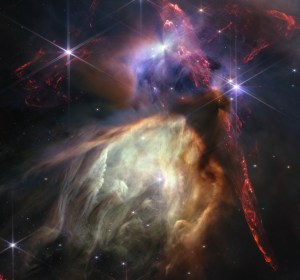Cassini Significant Event Report
For Week Ending 08/30/02
The most recent spacecraft telemetry was acquired from the Goldstone tracking station on Tuesday, August 27. The Cassini spacecraft is in an excellent state of health and is operating normally. Information on the spacecraft's position and speed can be viewed on the "Present Position" web page.
On-board activities this week included clearing of the ACS high water marks, Radio and Plasma Wave Science
High Frequency Receiver calibrations, uplink of the Cassini Plasma Spectrometer gain parameter update, and
execution of an Imaging Science Subsystem flight software checkout. This version of the flight software enables
some tests to further characterize the long-standing 2-hertz noise problem that causes subtle striping in images.
Analysis of the latest data will begin next week.
A wrap-up meeting was held after the successful completion of the first Tour Science Planning Team process
for S09/S10. Advance science planning for 5% of the Tour is 'done'! The Science Planning Manager
commended all participants for their hard work in achieving this first milestone.
The Magnetospheric Imaging Instrument (MIMI) science team is finalizing archive product definitions for their
instrument data based on a meeting between a representative from the Plasma Physics Interactions node of the
Planetary Data System and staff from Fundamental Technologies, the company that is developing the MIMI
archive plan. MIMI is preparing for a peer review of their archive design in the November-December
timeframe.
The Visible and Infrared Mapping Spectrometer (VIMS) instrument flight software version 5.1 has been
delivered to the Project Software Library. Regression testing was run using the VIMS Electronic Ground
Support Equipment breadboard in the Instrument Operations cleanroom, with additional testing performed in
the Integrated Test Laboratory. Test results are being analyzed in preparation for the upcoming Delivery
Coordination Meeting.
The Radio Science receiver was used to support the search for the CONTOUR spacecraft. No signal was
detected.
A Cassini Information Management System 2.3.1 patch delivery took place to fix two minor bugs.
In response to an action item from the PSG meeting held in June, System Engineering initiated twice weekly
CIMS & Uplink Process Working Group meetings.
The topic at this week's Cassini Design Team meeting was the End-to-End Tour Uplink System V&V activity
planned for the C38 timeframe. The meeting described the testing planned, particularly the role of the remote
sites.
Mission Assurance attended a briefing for the new Software Development Requirements. These new
requirements have been produced to incorporate CAN findings, ensure compliance with SEI's Software
Capability Maturity Model Integration and provide one-stop shopping for software task managers. The new
requirements are now applicable to all JPL Programs and Projects. Initial indications are that Cassini is
compliant with the requirements and will not be impacted by the change.
A joint JPL/Aerospace Risk Management Workshop was conducted at Aerospace Corporation this week.
This was the third in a series of workshops being conducted to jointly evolve the Risk Management Process
forward and establish some consistency within the industry. Cassini Mission Assurance led the development of
the benchmarking group, which developed a list of companies / industries to benchmark as well as a candidate
list of questions to be used. The next workshop is anticipated to occur at JPL within a month or so.
Testing at the Emergency Control Center at Goldstone last Thursday was successful. Predicts were generated
there, the antenna pointed, and a command loss timer reset was sent to Cassini. Only one minor item needs
resolution.
Additional information about Cassini-Huygens is online at http://saturn.jpl.nasa.gov.
Cassini will begin orbiting Saturn on July 1, 2004, and release its piggybacked Huygens probe about six months later for descent through the thick atmosphere of the moon Titan. Cassini-Huygens is a cooperative mission of NASA, the European Space Agency and the Italian Space Agency. JPL, a division of the California Institute of Technology in Pasadena, manages the mission for NASA's Office of Space Science, Washington, D.C.
Media Relations Office
Jet Propulsion Laboratory
California Institute of
Technology
National Aeronautics and Space
Administration
Pasadena, Calif. 91109.
Telephone (818) 354-5011






























